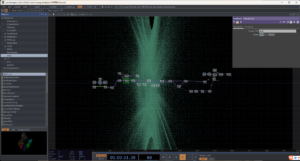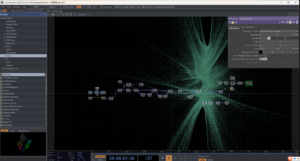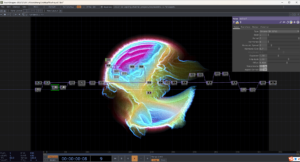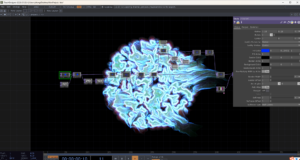Since the last blog posting, my work has been mostly troubleshooting, experimenting, and making some interesting outcomes. Here are the details of my work:
Solving the Image Display Issue
As I mentioned in my last post, my initial attempt to create a visual effect using the Geometry COMP failed because no image was appearing. To address this, I first updated Touch Designer to the latest version, thinking that the issue might be related to software compatibility. After the update, I carefully reviewed my setup and discovered that some buttons in the Add SOP operator weren’t activated. Once I fixed this, the image finally appeared!
However, the shape of the image wasn’t what I had envisioned. Instead of a smooth, circular form, it appeared as a hyperbola-like shape. This was a bit unexpected, and I realized I need to adjust the parameters further to achieve the desired circular effect. I’ll continue tweaking the settings to align the visuals with our project’s theme.


Outcome: Dynamic Circle Effect
While troubleshooting the hyperbola issue, I decided to explore other approaches. I successfully created a dynamic circle effect that responds to parameter adjustments. By manipulating the Noise parameters, I was able to generate various transformations, such as pulsating and morphing shapes, which could beautifully represent the concept of breathing. Additionally, I experimented with the Ramp tool to introduce color transitions, adding another layer of visual interest to the effect.
This dynamic circle effect feels like a significant step forward, and I’m excited about its potential. It’s versatile and can be adapted to different datas or stages of our project, depending on the adjustments we make.


Next Steps
1. Discuss Visual Aesthetics with the Group: During our next class, I’ll share my experiments with the team and gather feedback on which visual effects best align with our project’s vision. It’s important that my work complements the overall design and narrative.
2. Coordinate with Hefan: I’ll have a detailed discussion with Hefan to clarify our roles and responsibilities moving forward. We’ll need to decide how to divide tasks effectively to ensure a cohesive final product.
3. Collaborate with the Arduino Team: I’ll also connect with the team members working on the Arduino sensors to explore how we can integrate their data into Touch Designer. This could involve using sensor inputs to drive visual changes, creating a more interactive and immersive experience.

